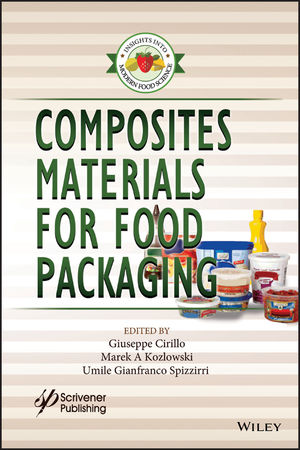Food Packaging
Meeting meat and poultry packaging needs
Manufacturers try to achieve clean-label products, enhance sanitation and advance automation

Expiration dates, packaging conditions, and product look, feel and taste are all considerations in consumer purchase decisions when reaching for meat and poultry.
Meat products with even the slightest discoloration or other imperfections might remain on store shelves as consumers become increasingly discerning. In addition to demanding perfect appearance, shoppers seek more natural products with minimal ingredients.
For processors, delivering this type of low-additive or additive-free meat product freshly and safely to consumers requires immense precision and the ability to adapt to challenges along the line.
With new factors impacting operations every day, market insight is invaluable for meat and poultry product manufacturers trying to stay ahead of the curve. Industry experts including Tom Egan, vice president, industry services, PMMI, The Association for Packaging and Processing Technologies, and three representatives from companies exhibiting at PACK EXPO International 2018 (Oct. 14-17, 2018; McCormick Place, Chicago) weigh in on the decisions and technologies surrounding safe and fresh meat production.
Achieving a natural or clean-label product
As meat and poultry professionals have witnessed, changes in the production line often stem from consumer demands. In today’s market, meat and poultry manufacturers must balance consumer requests for quality ingredients and a more natural finished product, while still providing flavor and meeting food safety requirements.
“The emphasis on natural ingredients is a key trend in meat production,” Egan says. “Consumers want to eat chicken and see that the package says ‘ingredients: chicken.’ Producers are getting rid of preservatives and moving toward a clean label.”
Delivering products that uphold taste, quality and safety while removing preservatives from the equation can be a challenge. The very elements that consumers negatively associate with chemical alteration are often the same that increase shelf life.
“Food must stay safe throughout transit and distribution,” says Tom Van Doorn, vice president of sales at Nercon (Booth #1730), a conveying equipment designer and manufacturer for consumer-packaged goods, including ready-to-eat [RTE] food products. “The challenge with this is that consumers are also demanding fewer additives, so these products contain fewer preservatives, but still must arrive fresh and safe.”
Cleanliness by design
Ensuring food is safe for consumption requires meeting a host of criteria. The product must be free of bacteria, contaminants and foreign objects, avoid tampering throughout the supply chain and maintain consistent temperature for quality. When aiming for these safety standards, processors and packagers often look to equipment design, where cleanliness is critical.
Sanitary equipment design is key for meat and poultry companies. According to PMMI’s “2017 Trends Shaping Meat, Poultry and Seafood” report, four out of five industry companies are specifying more hygienic processing equipment at the front of the line and for primary packaging equipment that comes in contact with the product.
“What we are seeing that affects equipment is really coming from the food manufacturers—the Nestlés and the Krafts,” says Dick Tonon, marketing and sales manager for Raque Food Systems (Booth #3920), which builds sealing and filling equipment and full ready-meal systems for refrigerated and frozen foods. “They are internally making policies and regulations to their sanitation programs and basic design requirements for their programs.”
The bar for cleanliness has risen far beyond simply washing hands or other basic measures that were once considered the standard. Internal quality assurance teams face sanitation head on and tackle specific sanitation problems in their facilities following broader regulations recently set by the government.
“The Food Safety Modernization Act has made food safety proactive as opposed to reactive,” Van Doorn says. “The part that equipment plays is to ensure that only the pure, intended product goes into and is sealed in the package. Your equipment cannot harbor any microbial load at all, or it’s going to end up in the final product.”
Technologies that add assurance
Packaging equipment can use various technologies to achieve a safe, reliable product. Modified atmosphere packaging (MAP) and vacuum packaging, oxygen-controlling films and high-pressure processing (HPP) are examples of freshness- and safety-geared innovations gaining traction in meat and poultry processing.
Extending shelf life, preserving flavor and maintaining freshness are just some benefits of these technologies. With a method like HPP, which can preserve food with few to no additives, a product can have increased longevity and fulfill consumer demand for a more natural product.
“Consumers like to think their products are less processed. MAP- and HPP-packaged products are a high-tech way to make a product pass as straight from the butcher,” Van Doorn says. “HPP is also becoming more common as a proactive measure for RTE foods, because processors can be sure they are putting out a product that’s 100 percent safe.”
Shelf-stable products, which are more susceptible to damage from air exposure, can benefit more from MAP, vacuum packaging or films, all of which combat fluctuating oxygen levels and lock in flavors and nutrients. Additionally, according to PMMI’s report, nearly half of meat and poultry companies use both MAP and vacuum packaging to improve product longevity as the number of case-ready products increases.
Track-and-trace technologies also offer potential benefits when it comes to the industry’s biggest fear: a recall. In the event that a product or series of products is deemed tainted, the recorded history and traceability of the product allow a company to identify where and how the damage or contamination occurred, Egan says.
Isolating an incident to a small area or source can spare a company significant product loss and cost. On a consumer level, tying grocery purchases to a store loyalty card can allow companies to contact people who purchased unsafe products.
Automation still driving the conversation
Applications for the automation in meat and poultry packaging are plentiful, and increasingly adopted solutions offer overall benefits such as increased production speed, quick changeover and sophisticated data collection. Automation can also address processors’ labor shortage
“Labor is hard to find and hard to retain, so processors are trying to reduce or remove that cost through automation,” says Mark E. Redmond, P.E., president of Food Plant Engineering (Booth #7014). “This adds another wrinkle, however, in that you’ve got to have the technical talent to implement and maintain automation equipment and processes. So, now you’re looking to increase the skill set of the labor employed.”
Since automation may reduce some flexibility for facilities, Food Plant Engineering, LLC works with its clients to implement the equipment only where it makes the most sense. The company will offer this type of design insight at PACK EXPO International, as well as expertise in plant expansion and renovation, resolutions for food safety hazards and remedies for processing bottlenecks.
Insight abundant at PACK EXPO International
Meat and poultry processors and packagers seeking further industry insight and the chance to see equipment advancements up close should head to PACK EXPO International 2018. Owned and produced by PMMI and co-located with Healthcare Packaging EXPO, the show will bring together more than 2,500 exhibitors and 50,000 attendees. In addition to countless cutting-edge innovations on display, meat and poultry professionals will have access to free educational seminars on topics including food safety, sterilization and more at the Innovation Stage in the North Building. PACK EXPO International will also feature the Containers and Materials Pavilion, offering packaging advancements, and the Showcase of Packaging Innovations, where award-nominated packages are on display.
To register and learn more, visit packexpointernational.com.
Looking for a reprint of this article?
From high-res PDFs to custom plaques, order your copy today!







